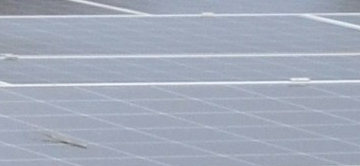On November 5, 2020, the French Energy Regulatory Commission (CRE) ruled on the eligibility of the applications submitted as part of the regulatory experimentation mechanism provided for by the Energy and Climate Law. Why, out of the 41 applications received, did the CRE only declare 19 applications eligible?
From top to bottom and bottom to top
Sector regulatory agencies were created to oversee infrastructure management in network industries open to competition, including energy, telecom and rail. These agencies (in France CRE, ARCEP, ART, ...) control, among other things, investments, access rules and tariffs. They use regulatory mechanisms that are essentially designed according to a top-down process in which the authority initiates binding rules imposed on regulated companies. Over the last twenty years or so, hearing the interested parties before implementing regulatory mechanisms has introduced a form of dialogue, but the fact remains that infrastructure managers and users of regulated equipment have no choice but to comply with the published rules. However, as technologies and user preferences evolve, standard business models and the way they are regulated may become obsolete.
To avoid slowing down or even blocking innovation, regulators are now experimenting with a bottom-up mechanism in which products, services or business models that do not comply with all established rules can be accepted by the regulator for particular applications and for a limited period of time. These 'regulatory sandboxes' are experimental spaces used by many countries in the financial, health, telecommunications and energy sectors. The concept is inherited from the IT world, where analysts must execute potentially dangerous code without running the risk of infecting the host operating system.
With the "sandbox", we are banking on a surge of initiatives based on knowledge of the field and the difficulties encountered by traditional operators, but also and above all by newcomers or candidates for entry into the industry. The collective benefits of the sandbox system are the difference between the gains expected from the innovations tested and the monitoring costs and potential damage caused by the exemptions granted. There is a lack of hindsight in estimating both, which can vary widely across countries and sectors.
The French energy sandbox
In France, the energy 'regulatory sandbox' was created by article 61 of the Law of 8 November 2019 on energy and climate. This article gives the CRE the power to grant exemptions from the conditions of access and use of networks and facilities to experimentally deploy innovative technologies or services in favor of energy transition and smart grids and infrastructures. Derogations shall be granted for a maximum period of four years, renewable once at most for the same duration and under the same conditions as the derogation initially granted.
CRE opened its first window from June 15 to September 15, 2020. Out of the 41 applications received, it rejected 22 right away (Decision No. 2020-269), some because they did not have the required innovative character (for example, applications aimed mainly at benefiting from a tax reduction or a reduction in network tariffs), others because they could be carried out without changing the legal framework in force, and finally others because the obstacles identified did not fall within the scope of the sandbox system (mainly applications relating to self-consumption).
Much ado about nothing?
After screening the eligibility criteria, out of the 19 applications that were not rejected, the CRE can only consider granting an exemption to three projects: creation of a closed distribution network (project submitted by SNMA), participation of storage facilities in system services (EDF) and development of local flexibility (Engie). But being eligible for an exemption is one thing, obtaining it is another. To (perhaps) obtain an exemption, the three applications will have to go through an in-depth analysis with additional information requested from the project leaders and consultation, if necessary, with the managers and organizing authorities of the networks.
The 16 other eligible projects are not rejected, but it appears that 7 of them fall within the competence of both CRE and the General Directorate for Energy and Climate (DGEC), 8 fall within the sole competence of the DGEC, and 1 falls within the competence of both the DGEC and the National Commission for Information Technology and Civil Liberties (CNIL). If in fine there is a derogation, it is not only the CRE that will be able to grant it.
Independence of the regulator
We can see that the energy sandbox is heavily guarded, perhaps too much so. But it had to be inserted into the existing regulatory process without encroaching on the prerogatives of the two pillars that are the CRE and the DGEC. Moreover, its scope of application (derogations to the conditions of access and use of networks) is very narrow. This first experience shows that the French regulator, caught between the law and the powers retained by the government in energy matters, has little room for maneuver since it is free to decide on only 3 cases out of 41.
The success of the sandboxes is highly dependent on the degree of independence of the regulators who oversee them. Economists have worked extensively on the risk of regulatory capture, i.e., the risk of economic or political interest groups directing the regulator's decisions in a direction that is not in the collective interest. When regulators are given the right to grant derogations from common rules, the lobbies are not far away and it is therefore necessary to be sure that the derogations will meet the objectives pursued. There are therefore still many countries in which it is preferable that young (and old) shoots do not have a sandbox for their games.
*
* *
The creation of regulatory sandboxes is an institutional innovation that should be applauded. Ofgem, the British energy regulator, opened its first sandbox in December 2016. The first projects accepted were local energy exchange platforms. Since then, it has already moved towards greater flexibility. In particular, applications can now be submitted at any time without waiting for the opening of windows. In France, because of the prevailing centralizing tradition, this is still a recent experiment with a limited scope. But the English example shows that the more innovative projects that are filed, the more regulators will be encouraged to adapt the design and application of the economic framework rules for their sector.





